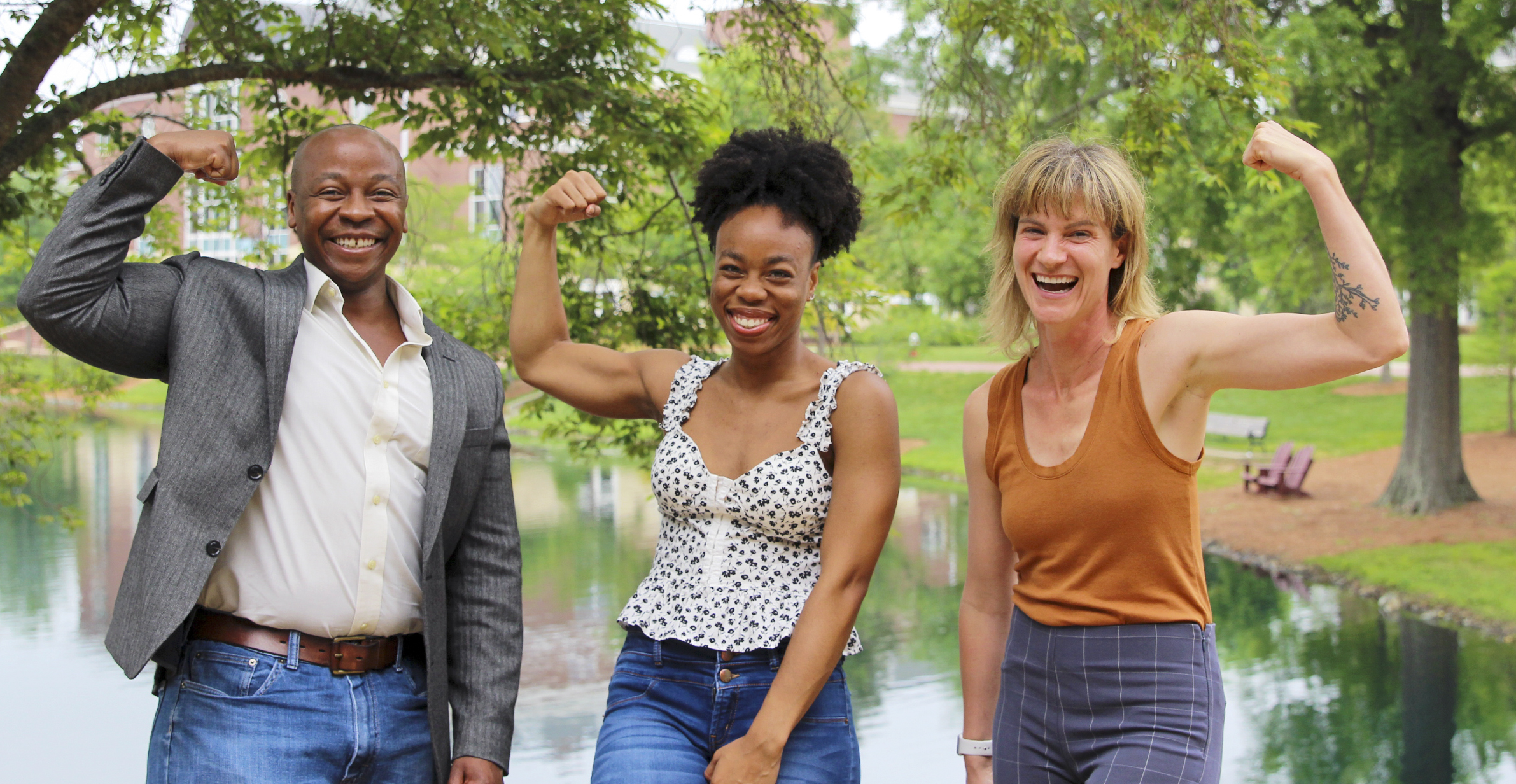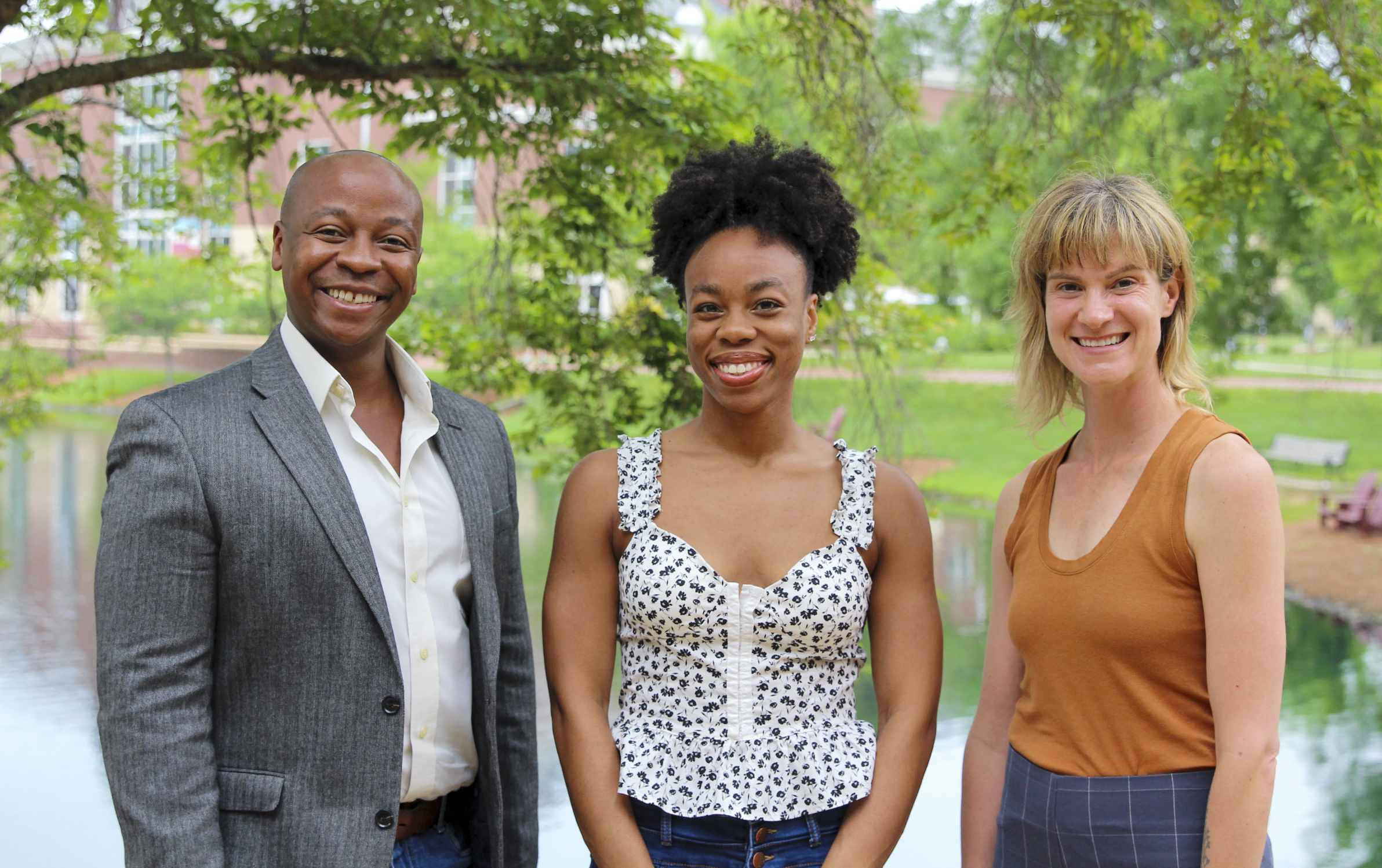Perry and mentors Associate Professor of Dance Renay Aumiller and Associate Professor of Exercise Science Titch Madzima evaluated dancers to find correlation between body composition and qualitative performance
Already a trained dancer, Cassidy Perry ‘22 came to Elon with a healthy skepticism and curiosity about the art form and its traditions.
During her Honors Fellows interviews in spring 2018, she pitched the idea for what would become her Lumen Prize-winning research project into body composition and aesthetic performance.
 “How much of what’s thought of as the ideal dancer’s body is based on utility, and how relevant is it to a dancer’s actual performance? I thought it would be interesting to look at dancers across body types and find a way to measure their performance,” Perry said.
“How much of what’s thought of as the ideal dancer’s body is based on utility, and how relevant is it to a dancer’s actual performance? I thought it would be interesting to look at dancers across body types and find a way to measure their performance,” Perry said.
Her questions led to a co-mentored, interdisciplinary study melding dance performance, dance science and exercise science. The research included 27 participants and nine independent, professional dance judges. The results bucked her hypothesis but contribute to the study of dance forms beyond ballet and diminish historical physical ideals imposed on performers’ bodies.
A dance performance and choreography major with minors in exercise science, entrepreneurship and business administration, Perry began meeting with Elon faculty during her first year in hopes of testing her hypothesis that more muscle would result in better performance.
Associate Professor of Dance Renay Aumiller, whose expertise is in qualitative evaluations of dance performance, was excited by the research potential. She encouraged Perry to enlist an exercise science professor to co-mentor the study. She connected with Associate Professor of Exercise Science Titch Madzima, who agreed to mentor her through body composition studies.
“Cassidy is very curious, just as all of Elon’s dance faculty are curious, about what training provides dancers,” Aumiller said. “What is high-quality dance training? What elements of a dancer’s training are most valuable?”

Perry’s project, “Creating an Optimal Performer: A Body Composition and Performance Analysis,” was awarded the Lumen Prize the spring of her sophomore year. The Lumen Prize, Elon’s top award for undergraduate research, awards scholars a $20,000 scholarship to support ambitious research projects. It allows undergraduates to work closely with faculty mentors on their projects for two years. Each year, 15 rising juniors are named Lumen Scholars and conduct research that often produces conference presentations and publications.
Though the pandemic narrowed the study’s scope — initially planned as a global evaluation of dancers in Ghana, Italy and the U.S — it didn’t impact the significance of the results.
Twenty-seven dancers in Elon’s major and minor programs, on the dance team and members of Elon DanceWorks participated in the study. They underwent body composition measurements and performed tests of their strength, flexibility and range of motion. Then, Perry gave them a short routine to perform individually, which she filmed and submitted to dance professionals to score qualitatively.
They were surprised when dancers with higher amounts of lean muscle scored lower in the subjective measurements. Perry presented her research at the Southeast American College of Sports Medicine conference, the National Conferences on Undergraduate Research and Elon’s SURF Day.
Perry believes the work opens doors to further research in dance training and the effects of muscle mass on fluidity of movement. Likening it to sport-specific exercises, Perry wonders if consistent and targeted training would improve dancers’ abilities.
“I think this will help go against some of the aesthetic fears around ‘I don’t have a ballet body,’” Perry said. “There is no ‘ballet body’. We know that but it’s hard to break. I think we can also study more about musculature and dancers’ injuries, specifically overuse injuries, which often stem from muscle imbalances.”
“What’s exciting to me is that Cassidy expected people who have higher levels of strength to perform better qualitatively,” Aumiller said. “She found that to be the opposite. It’s exciting to have the data to prove it. The data did show that, although higher levels of lean muscle mass did not equate with higher performance scores, the more training a dancer had did equate to higher performance scores. This concludes that a dancer’s body type does not relate to how well they are perceived to perform, but learning how to control their body, no matter the shape, does.”
Madzima concurred that more studies across different genres of dance are needed to better understand and provide training for dancers’ bodies.
“Cassidy’s research contributes to the literature and data on dancers,” Madzima said. “Dancers are populations that haven’t been widely studied, so there isn’t a ton of information out there about body composition in dancers as compared to other athletes.”
Madzima praised Perry’s ability to persevere through the pandemic, work a job, complete a range of academic study, lead the Elon African Society while meeting deadlines and performing in multiple shows.
“I’m impressed with her ability to juggle all of that,” Madzima said. “Cassidy took a lot of ownership of her project all the way through. Renay and I were really able to play the role of guides as mentors, sharing our perspectives.”
“Cassidy is incredibly driven,” Aumiller said. “I learned a lot from her, and I’m excited about where she goes next. She’s shown so much grit and rigor to dig into a project like this for four years.”
Following graduation, Perry will pursue a dance career and hopes to perform with European companies and audiences.
Learn more about the Lumen Prize and other Lumen Scholars here.



